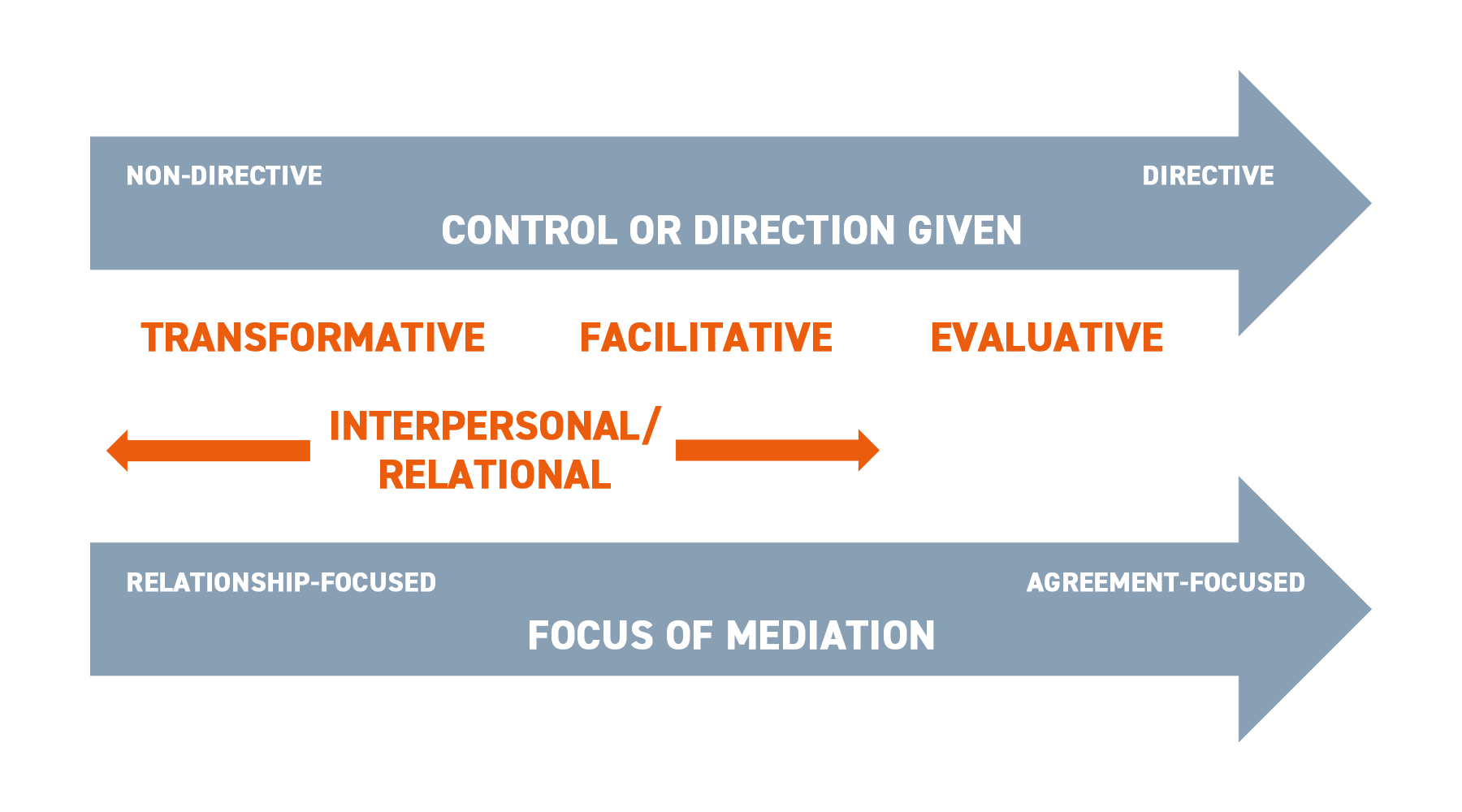
Posted on: January 22nd, 2024

Mediators work in a variety of ‘styles’. These styles depend on how much attention they are paying to the parties’ relationship, and the degree to which they guide or direct the parties to a solution.
Styles of mediation are often described as being on a continuum made up of three main MODELS: Transformative, Facilitative, and Evaluative.
Transformative Mediation
As the name implies, this style of mediation aims to transform the disputing parties themselves AND their conflict. In this highly non-directive approach, the aim is to empower the parties by leaving them in charge of what happens and what gets discussed. The model also aims to build the extent of recognition of each other: the degree to which they can understand and empathise with the other.
Facilitative Mediation
The most widely-used mediation style, facilitative mediation takes more of a problem-solving approach than Transformative Mediation. It aims to achieve an agreement that equally satisfies both parties’ interests. Although still working non-directively, and without making suggestions or evaluating the dispute, the facilitative mediator applies more of a stage-by-stage process to what happens, while still leaving the parties in control of what gets discussed.
Evaluative Mediation
Sometime referred to as deal-making or ‘civil’ mediation, this is the approach most favoured by legal practitioners. Usually working with commercial or financial disputes, the practitioner has technical knowledge of the issues in contention. He or she can help weigh up the strengths and weaknesses of both sides of a legal argument, and consider the likely outcome were the case to go to court. Unlike the other two above approaches, the evaluative model focusses solely on getting an agreement, usually working with parties and their lawyers, in two separate rooms.
Interpersonal/Relational Mediation (UK Mediation’s model)
Our model, called re:talk, pays the closest attention to the relationship between the parties: building dialogue and transforming how they relate to each other. There is no evaluation involved, a step-by-step process is used, and the aim is to replace competition with collaboration. Whilst an agreement is usually reached, this is not considered essential: a sufficient outcome is for the parties to have restored a constructive level of dialogue and to feel ready to leave their conflict behind them.

With some significant differences between the models, mediators must be aware of which one they are using, and that they ensure that it is appropriate for the type of mediation work that they are carrying out.
If, like us, your interest is in the interpersonal dimension of conflict, then you can find out more about our mediation training services here.
Or if you would like to use our interpersonal mediation services, you can find out more here.